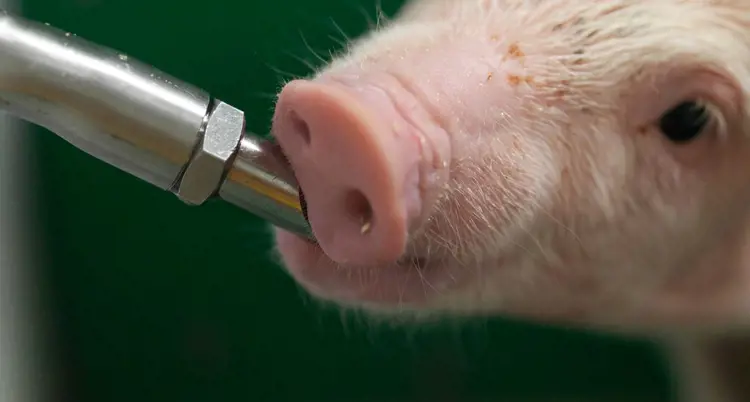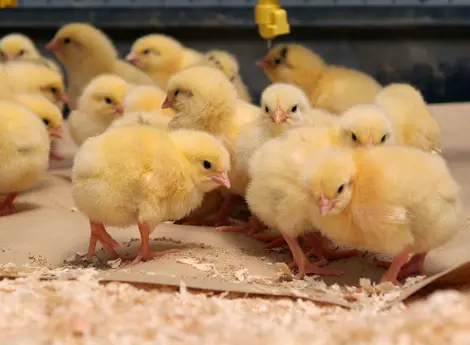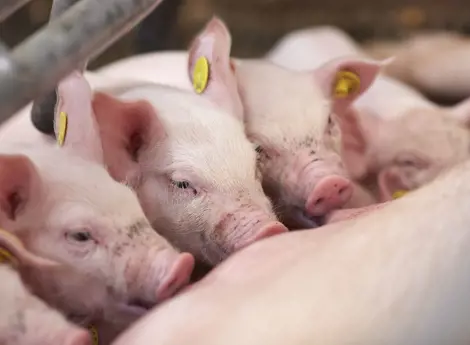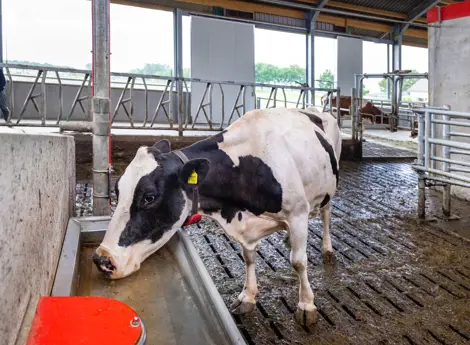Why high-quality water is essential for healthy, highly productive swine
Water is an important nutrient for animals, supporting multiple physiological processes. As well as a healthy metabolism, it enables the transportation of nutrients within the body and plays an important role in heat regulation. An adult pig consists for about 50% of water.

As a farmer, ensuring your animals have enough good quality drinking water is essential for good performance. Water quality can be assessed in several ways. Once the water quality of the source is determined to be good, specific attention must be paid to potential biofilm development in water pipes, which can impact water quality. The tips below will help you keep your animals’ water clean and hygienic.
An animal’s water intake varies considerably during different stages of its development. A lactating sow can easily drink 25 litres per day to support milk production and regulate body temperature. Meanwhile, newly weaned piglets should drink 10% of their body weight to have the best possible start to the growing period. For a 7-kilo piglet, this means 700 ml’s of water. Depending on feed intake, fattening pigs need between 3.0 and 6.5 litres per day for optimal growth.
The adjustment of the water system must be such that sufficient water reaches the animals at the right pressure. The optimal water yield per minute is different per species (see ‘Tips and recommendations’ below). The need for water can also vary due to a variety of factors. In cases of heat stress, for example, the requirement may increase by a factor of between 1.2 to 2.0.
Assessing water quality
Ensuring optimal water quality is important to keep animals healthy and ensure optimal performance. This can be assessed through four different means: visual, sensory (taste/smell), chemical analysis and microbiological analysis. Make sure to test water from the source and at the end of the drinking pipes, as differences can often be observed between both samples.
A visual and sensory assessment is a quick and easy way to obtain an initial indication of your farm’s water quality. It is best done at the place where the animals drink, preferably at the end of the drinking system. In practice, the water quality at the source often differs from that at the drinker. After draining, let the water rest in a bucket or transparent glass for a few minutes and watch for signs of precipitation at the bottom. If the water has a different smell, colour, or taste, then further examination of the drinking water system is necessary.
Chemical analysis indicates whether the water meets the standards for the animal category concerned. In addition to pH and hardness, the content of minerals determines whether the water is suitable. Abnormal levels can negatively affect taste. In addition, overly high levels can cause deposits to form in the system, reducing water supply yields, while excessive concentrations of certain minerals can obstruct the absorption of some others.
Microbiological analysis shows the number of microorganisms at the time of sampling. With an increased concentration of microorganisms, it is important to determine the type of organisms by undertaking a comprehensive analysis. If you find higher levels of microorganisms than are suitable for the animal category, it is necessary to identify the cause of the contamination and take appropriate action. A microbiological contamination is often formed after the water is pumped from the source, as deposits of minerals and organic residues in water pipes (known as biofilm) are an excellent breeding ground for microorganisms. These residues enable germs such as salmonella and E. coli to survive, grow and infect the animals through the drinking water, even when the source water is of sufficient quality.
The importance of regular assessment
It is important to frequently analyse water quality at different points within the system, so that you know the status of the quality of drinking water. To prevent microbiological infections, you should clean the drinking water system regularly. Drinking water additives, such as acids and vitamins, are in many cases based on organic carriers, such as sugars, that contain nutrients for bacteria. Step one is to flush the pipes thoroughly after use. As a second step, cleaning the pipes with the appropriate products is necessary to ensure drinking water hygiene.
Tips and recommendations for swine
Water intake
- Always check how much water the animals drink.
- A decrease in water intake is noticeable before a reduction in feed intake. Monitoring water intake allows you to respond more quickly to this situation.
Drinking nipples
- Choose drinking nipples with the right diameter and pressure to yield the following water volumes:
- Piglets: 0.6 litres/min
- Sows: 2.5 litres/min
- Grower and finishers pigs: 0.8 litres/min -
Before each new batch of animals, check that all nipples provide enough water.
-
If the nipples have not been used for a while (for example, in the case of piglets in the farrowing room), first let the old water (which is in the vertical part of the pipe) drain away.
Drinking points
- Make sure you have sufficient drinking points.
- Avoid drinking bowls as they can accumulate pathogens.
A hands-on, targeted approach
Our hands-on Natural Power programme will guide you through the different steps needed to optimise water quality for your animals. But that is not all: by bringing together a range of farm management and nutrition approaches, our hands-on, targeted programme will provide you with the tools needed to improve animal health and performance on your farm, supporting the prudent use of antibiotics.
Learn more about the Natural Power programme



